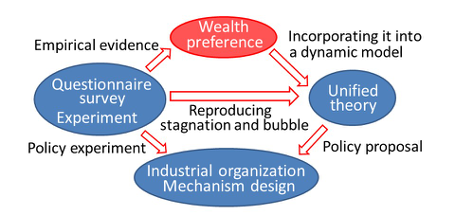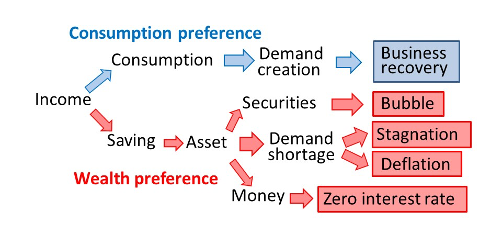This project consists of three subprojects.

Figure 1 Project structure
Subproject (1) constructs a macroeconomic theory to account for transition to a low-growth stage, long-term economic stagnation and asset price bubbles, and widening wealth inequality in a cohesive framework. To this end, focus is placed on the relative strength of people’s desire for wealth holding with respect to that of consumption. The effects of macroeconomic policies are scrutinized within this framework.
Subproject (2) examines quantitative characteristics of wealth preferences through large-scale questionnaire surveys and economic experiments. In the surveys, hypothetical questions are asked to identify how one’s income and wealth impact consumption.
Subproject (3) explores micro-foundations of institutions, rules and regulations that can spur product innovation, so as to stimulate aggregate demand and better utilize idle resources.

